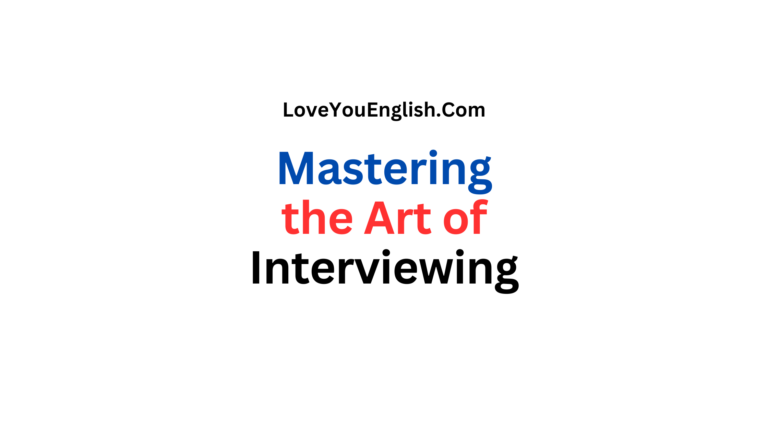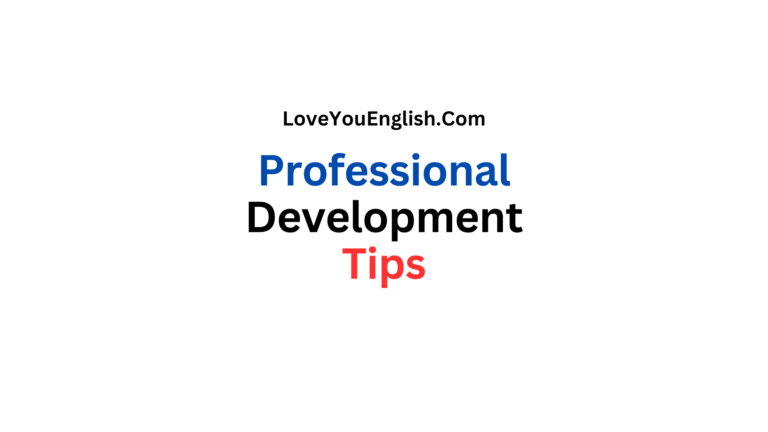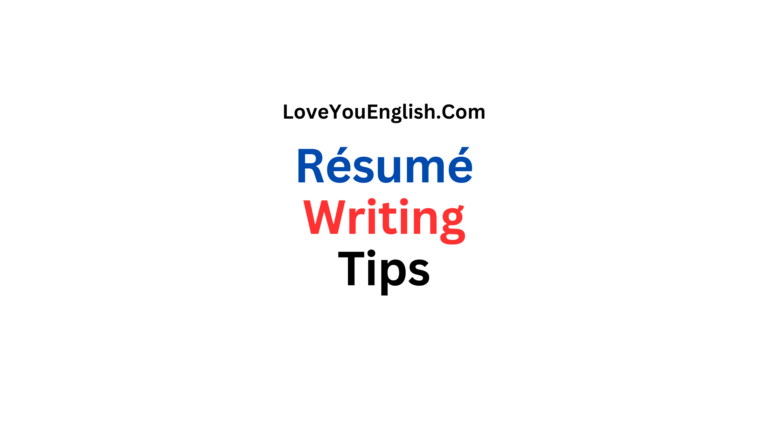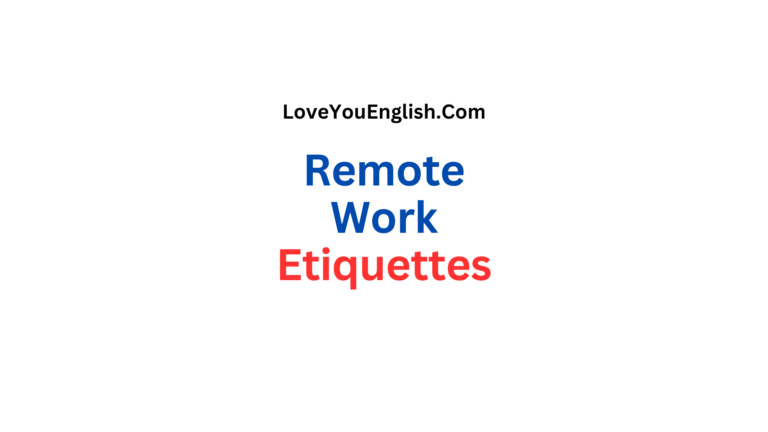Remote Interview Tips: 5 Tactics for a Successful Job Interview
Remote Interview Tips: 5 Tactics for a Successful Job Interview
Nowadays, remote interviews are super popular, especially because of recent global events that have changed how we work and connect with each other.
If you’re looking for a job or hiring someone, it’s really important to get good at remote interviewing to succeed in today’s job market.
In this guide, I will share five important tips to help you have a smooth, effective, and easy remote interview experience.
Use Technology Wisely and Keep Your Connection Strong
To have a successful remote interview, it’s super important to use the right technology and have a reliable internet connection.
Technical problems like frozen screens or bad audio can really mess things up.
To make your remote interview go smoothly, here are some tips:
a) Pick the Best Platform:
Get to know popular video conferencing tools like Zoom, Microsoft Teams, Google Meet, or Skype.
Each one has different features, so take some time to learn how to use the one you’ll need for your interview.
You can practice with friends or family to feel more comfortable with the setup and controls.
b) Check Your Gear:
Before the interview starts, make sure to test all your equipment.
This means checking your computer or device, camera, microphone, and speakers or headphones.
Position your camera at eye level and make sure your face is well-lit. Use a good microphone or headset for clear sound.
If you can, connect to the internet with a cable instead of Wi-Fi for better stability.
c) Prepare for Problems:
Since technology can be unpredictable, it’s smart to have a backup plan.
This could mean having another device, like a tablet or smartphone, ready in case your main one doesn’t work.
Keep the interviewer’s phone number close by in case you need to switch to a voice call.
Having these backup options will help you stay calm and professional if any tech issues come up.
Improve Your Internet Connection:
Having a reliable internet connection is super important for a successful remote interview.
If you can, plug your device directly into the router with an Ethernet cable.
If you have to use Wi-Fi, make sure you’re close to the router and that no other devices or apps are using up the internet during your interview.
If you often have connection problems, think about upgrading your internet plan.
Shut Down Extra Apps:
Before your interview starts, make sure to close any apps or browser tabs you don’t need.
This will help avoid any surprise notifications, sounds, or slow performance that could interrupt the interview.
It also makes sure your device can focus on keeping a strong video connection.
By using technology wisely and ensuring a strong connection, you can create a smooth remote interview experience.
This way, you can concentrate on what you’re saying instead of worrying about tech issues.
Set Up a Professional Space
The space you choose for your remote interview is really important for the impression you make.
A tidy, quiet, and professional-looking area can boost your credibility and help you feel more at ease.
Here are some tips for creating the best environment for your remote interview:
a) Pick the Right Spot:
Find a quiet, well-lit place in your home or office for the interview.
Stay away from busy areas or places that might have unexpected noises.
Natural light is great, but if that’s not an option, use soft lighting to light up your face evenly.
Avoid bright overhead lights or backlighting that can create shadows or glare.
Clear and Organize Your Space:
Make sure the area that shows up on your camera is neat and free of distractions.
Take away any personal items, mess, or anything inappropriate that might be seen.
A plain, simple background is usually the best choice.
If you don’t have a good wall to use, think about using a virtual background from the video call platform, but ensure it looks professional and isn’t distracting.
Reduce Possible Interruptions:
Let your family, roommates, or coworkers know about your interview times so they don’t accidentally interrupt you.
Keep pets in another room and turn off notifications on your devices.
If you live in a noisy place, you might want to use noise-cancelling headphones or a white noise machine to help block out background sounds.
Dress for Success:
Wear professional clothing just like you would for a face-to-face interview, even if only your upper body is visible.
This not only makes you look good but also helps you feel more focused for the interview.
Stay away from busy patterns or bright colors that could be distracting on camera. Solid, muted colors are usually the best choice.
Get Your Materials Ready:
Have everything you need close by, like your resume, portfolio, notepad, and a glass of water.
Keep these items organized so you don’t have to shuffle through papers or look for documents during the interview.
If necessary, think about using a second monitor or device to show reference materials.
Adjust Your Camera Angle:
Set your camera at eye level to make the conversation feel more natural.
You might need to raise your laptop or change the height of your chair.
Make sure you’re centered in the frame with your head and shoulders visible.
Keep a good distance from the camera—not too close that only your face shows, but not too far that you look tiny on screen.
Keep Good Posture:
Make sure to sit up straight and have good posture during the interview.
This not only makes you look more professional but can also help you feel more confident and awake.
If the interview is long, try using a comfy chair that supports your back to help you stay in good posture.
Creating a professional atmosphere shows that you pay attention to details and value the interviewer’s time.
This kind of setting helps you present yourself well and lets you focus on highlighting your skills and qualifications.
More cool topics:
- Ultimate Guide to Creating a Standout LinkedIn Profile
- Training and Development: Helping People Grow & Succeed
- Professional Development Courses: Boost Your Skills and Career
- Continuing Professional Development: Keeping Your Skills Sharp
Understand Non-Verbal Communication
In online interviews, non-verbal signals are super important because they help connect you and the interviewer even when you’re not in the same room.
Getting these signals right can really improve your communication and leave a great impression.
Here are some tips to shine in non-verbal communication during online interviews:
a) Keep Eye Contact:
Look straight into the camera while you talk to mimic eye contact with the interviewer.
It might feel a bit weird at first, so practice a bit.
When you’re listening, it’s fine to glance at the interviewer’s image on your screen, but remember to look back at the camera when you respond.
You could even put a small sticker or note near your camera to remind you to look there.
b) Show the Right Facial Expressions:
Smile naturally and use your face to show you’re engaged.
In a video call, you might need to make your expressions a little bigger so they show up on camera.
Practice being an active listener by nodding sometimes and showing that you’re paying attention to what the interviewer is saying.
Pay Attention to Your Body Language:
Even if only your upper body is seen, it’s important to show open and friendly body language.
Sit up straight, keep your shoulders back, and don’t cross your arms.
Use natural hand movements when you talk, but try not to move your hands too fast or too much, as it can be distracting on video.
Show You’re Listening:
Make it clear that you’re really paying attention during the conversation by using body language that shows you’re engaged.
This means nodding your head, sitting up straight, and making the right facial expressions.
These actions help the interviewer know that you’re focused and involved, even if you’re not in the same room.
Be Careful with Your Movements:
Try not to fidget, play with your hair, or make sudden movements that could distract people on camera.
If you need to change your position or grab something, do it slowly and carefully.
Quick movements can look shaky or blurry during video calls.
Change Up Your Voice:
While it’s not exactly body language, how you use your voice is super important when talking online.
Mix up your tone, speed, and volume to make your speech more interesting and to highlight important points.
Speak clearly and at a steady pace so that everyone can hear you well and understand what you’re saying.
Be Patient:
Sometimes, video calls can have a little lag, which means there might be some delays when you’re talking.
It’s important to be patient and not interrupt the interviewer.
If you want to say something, try using visual signals like raising your hand a bit or nodding to show you have something to add.
Keep Your Focus:
Stay focused on the interview and try not to look away from the camera too much.
If you need to check your notes, do it quickly and let the interviewer know.
This way, you keep the connection strong and show that you’re really engaged in the conversation.
By getting good at these non-verbal communication skills, you can make your remote interview feel more personal and engaging.
These techniques can help make up for not being in the same room and can really improve how you perform in the interview.
Prepare and Practice a Lot
Getting ready is super important for a successful remote interview.
Since virtual interviews have their own challenges, being well-prepared is even more essential.
Here’s how to make sure you’re all set to impress:
Learn About the Company and Job:
Do some thorough research on the company, its culture, any recent news, and the specific job you’re applying for.
Knowing this information will help you give better answers and ask smart questions.
In a remote interview, having this info handy can boost your confidence and help the conversation flow better.
Get Ready for Common Interview Questions:
Think ahead and come up with answers for typical interview questions, especially those related to working from home.
You might be asked about how well you can work alone, how you manage your time, and what tools you’ve used for remote teamwork.
Make sure your answers are clear and show off your skills and experiences that are relevant to the job.
Create Questions for the Interviewer:
Make a list of smart questions to ask the person interviewing you.
These could be about what it’s like to work at the company, how teams work together when they’re remote, or what chances there are for you to grow in the job.
Having these questions ready shows that you really care about the position and are interested in the company.
Practice with Mock Interviews:
Set up practice interviews using the same technology and setup you’ll use for the real one.
Ask a friend, family member, or mentor to pretend to be the interviewer.
This will help you feel more at ease with the process, improve your timing, and polish your answers.
If you can, record these practice sessions so you can watch them later and see how to do even better.
Know Your Resume and Experiences Well:
Go over your resume carefully and be ready to talk about any part of your background in detail.
When you’re interviewing remotely, you might not be able to quickly look at a paper copy of your resume, so make sure you can confidently discuss your experiences without needing to see anything written down.
Gather Specific Examples and Stories:
Create a collection of specific stories that show off your skills and accomplishments.
Use the STAR method (Situation, Task, Action, Result) to organize these stories.
Having these examples ready will help you give strong and clear answers to behavioral questions.
Focus on how you deliver your answers, paying attention to your speed, tone, and clarity.
When you’re in a remote interview, it’s really important to speak clearly and engagingly.
Practice talking at a steady pace and pronouncing your words well so that they come through clearly on the video call.
Set Up Your Interview Area:
Arrange your interview space just like you want it to be for the real interview.
Practice your answers in this setup to make sure you’re comfortable and everything is in the right place.
This means checking your lighting, camera angle, and background.
Create a Quick Reference Guide:
Make a short cheat sheet with important points you want to remember, like your achievements, questions for the interviewer, or key facts about the company.
Keep this out of sight but easy to reach during the interview.
Just remember to use it sparingly so you don’t seem distracted.
Time Your Answers:
Practice giving answers that are clear and to the point.
In remote interviews, it’s especially important to be concise to keep the interviewer engaged.
Try to keep your responses around 1-2 minutes long, unless the question needs a more detailed explanation.
Get Ready for Technical Questions:
If your job requires technical skills, be ready to talk about or show these skills during a remote interview.
You might need to share your screen, go over your portfolio, or explain complicated ideas out loud.
Practice explaining these things so you can share technical details in a clear and simple way.
Create a Pre-Interview Routine:
Make a routine that helps you feel calm and confident before your interview.
This could include going over your notes, doing some deep breathing, or listening to some upbeat music.
Having a regular routine before the interview can help ease your nerves and get you in the right frame of mind.
By preparing and practicing a lot, you’ll feel more self-assured and ready to tackle the special challenges of remote interviews.
This preparation helps you focus on showing your best self and connecting with the interviewer instead of stressing about the details or struggling to find the right answers.
Follow Up the Right Way
The interview isn’t over when you end the video call.
Following up properly is really important in remote interviews because it helps strengthen the connection you’ve made and keeps you in the interviewer’s thoughts.
Here’s how to do a great post-interview follow-up:
Send a Quick Thank-You Email: Within a day after the interview, send a personalized thank-you email to everyone you talked to.
Show your gratitude for their time and remind them of your interest in the job.
Mention specific things from your conversation to prove that you were paying attention and engaged.
If there were any questions you didn’t get to answer completely during the interview or things you forgot to say, the follow-up email is a great chance to quickly mention those.
Just keep it short and to the point.
If the interviewer asked for any extra information or materials, make sure to send those right away.
This shows that you are dependable and pay attention to details.
In your follow-up email, take a moment to remind them why you would be a perfect fit for the job and the company.
Talk about how your skills and experiences match what you talked about in the interview.
Wrap up your follow-up by showing your excitement for the next steps in the hiring process.
This will show that you are still interested and eager to move forward.
If it feels right, think about connecting with your interviewer on professional networking sites like LinkedIn.
This can help keep the relationship going, especially when you can’t meet in person.
Stay Patient and Keep Trying: The process of hiring remotely can sometimes take longer than meeting in person.
It’s important to be patient, but if you haven’t heard back within the time the interviewer mentioned, feel free to send a friendly follow-up email after a week or two.
Think About the Interview: After your interview, take a moment to think about how it went.
Write down what you did well and what you could improve on.
This reflection can really help you in future interviews, whether they are online or face-to-face.
Keep Looking for Jobs: While you wait for a response, don’t stop searching for other job opportunities.
This way, you keep your options open and stay active in the job market.
Get Ready for What’s Next: If the interviewer talked about the next steps, like more interviews or tests, start getting ready for those.
Being prepared will help you move quickly through the hiring process.
Ask for Feedback: If you don’t get the job, it’s totally fine to politely ask for feedback on how you did in the interview.
This can give you helpful tips for your next remote interview.
Following up effectively shows that you are professional, shows your interest in the job, and helps you stand out in a remote hiring process where it can be harder to make personal connections.
Conclusion:
Remote interviews can be tricky, but they also give you a chance to show how adaptable and tech-savvy you are, which are super important skills in today’s job market.
By using technology wisely, setting up a neat workspace, being aware of your body language, getting ready well, and following up after the interview, you can make remote interviews go smoothly and successfully.
Always remember that the secret to doing well in remote interviews is to prepare, practice, and keep a positive mindset.
Treat each remote interview as a chance to connect with future employers and highlight your abilities in a way that’s becoming more popular in the job world.
With these tips, you’ll be ready to ace your next remote interview and confidently move forward in your career path.







